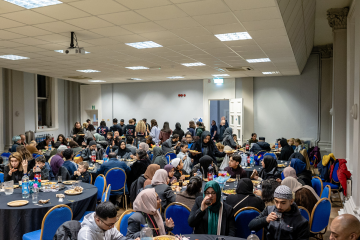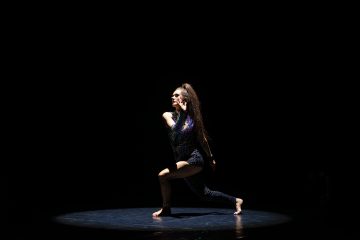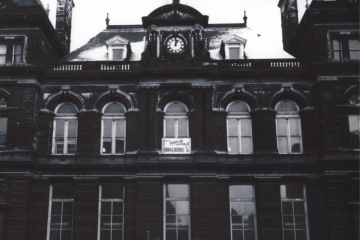Near Neighbours: Interfaith Conversations Part I
In September last year, Kala Sangam was awarded a small grant from Near Neighbours to deliver an Interfaith Community project with a Buddhist and a Hindu group in Bradford. In this project we aim to explore the fundamental similarities and differences between these faiths and communities. As a new member of staff here, this is the first project I am taking a lead on and I am thrilled that it is one which seeks to celebrate the diversity of Bradford but also aims to find commonality between people, their faiths and their communities.
On Friday 28th April we had our first full interaction session with the two participant groups: Anand Milan Centre and members of Soka Gakkai International. We met in our Café space here at Kala Sangam, a friendly and informal space.
We heard from representatives from each group. Mr Mistry, who founded the Anand Milan Centre spoke of his commitment to the older generation of Hindus in Bradford. Anand Milan, meaning “a lovely place to meet”, was founded to celebrate older people in the Hindu community and with the aim of tackling social isolation in older age. They provide hot food, deliver activities and light exercise classes, as well as organising day trips. There was a real emphasis on communal prayer and sharing food throughout his presentation. We heard from three representatives of SGI, who practice Nichiren Buddhism. They spoke about the meaning of the mantra which they chant during meditation. This chant, “Nam-myoho-renge-kyo”, is derivied from a mixture of medieval Chinese, Sanskrit and Japanese; the mantra pays homage to the Lotus Sutra which is considered to be the definitive text or scripture in Buddhism. Silvia, who leads the Buddhist group in Bradford, brought her Gohonzon to share with the group. The Gohonzon is a sacred scroll, written in the 13th century in a mixture of Chinese and Sanskrit, it is the supreme object of devotion in the Nichiren strand of Buddhism and is the object of daily meditation. Lastly the SGI group spoke of the importance of education, humanitarianism and cultural exchange in Soka Gakkai International.
Examples of prayer were performed by each group. SGI members performed a short chanting mediation in front of the Gohonzon, and the Anand Milan group sang a traditional communal prayer. The participants discussed what they think of during these prayers and the objects of their meditation. As well as personal prayers for themselves and loved ones, both groups found that they always included a wish for peace and happiness for all mankind in their prayers. A short question and answer session followed with subjects such as: prayer, the cycle of life and rebirth and symbolism in both faiths. I was impressed by each groups’ clear interest in learning about another faith and culture, and was quite moved by their honesty and openness during this initial meeting.
We then discussed the next stage of the project – three visual arts workshops with Cat Scott, our Marketing and Admin Assistant who is also an accomplished Visual Artist. Cat presented a choice of two visual art techniques for the following sessions: the first using felt applique to make a large wall hanging; or secondly, printmaking with polystyrene tiles to make a series of large collaborative prints. The group, almost unanimously, chose the printmaking. Participants immediately began to discuss with Cat the importance of symbolism and colour in both faiths and discovered symbols and practices that both religions share.
At the end of the evening everyone left with a clear enthusiasm about the weeks to come. Even though the majority of participants had little or no experience in making art, discussions were already beginning on the possibilities of printmaking. I am particularly excited to explore what unites the two groups, Buddhism and Hinduism share many beliefs and practices; but also to discover the nuances between the religions and the practices of prayer that make them unique.
Marianne Matusz
Education and Outreach Officer


